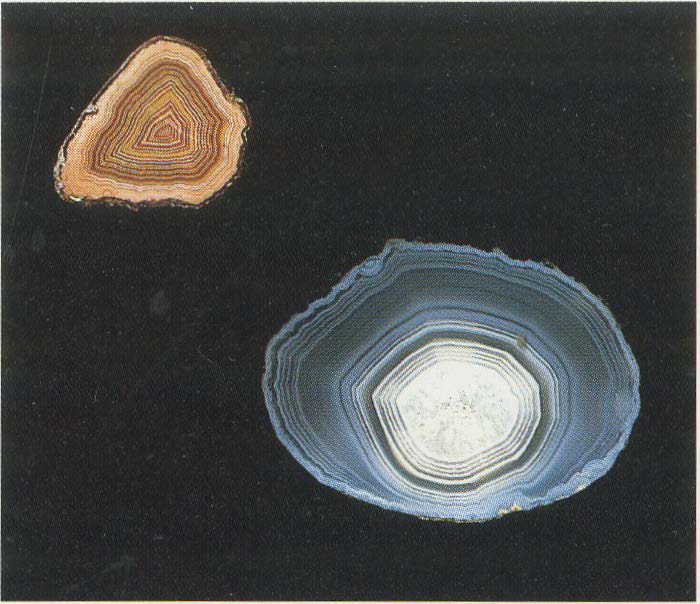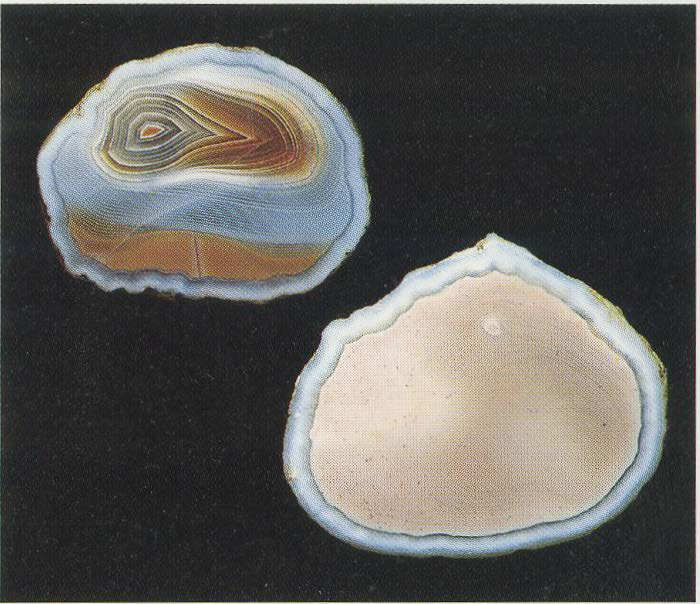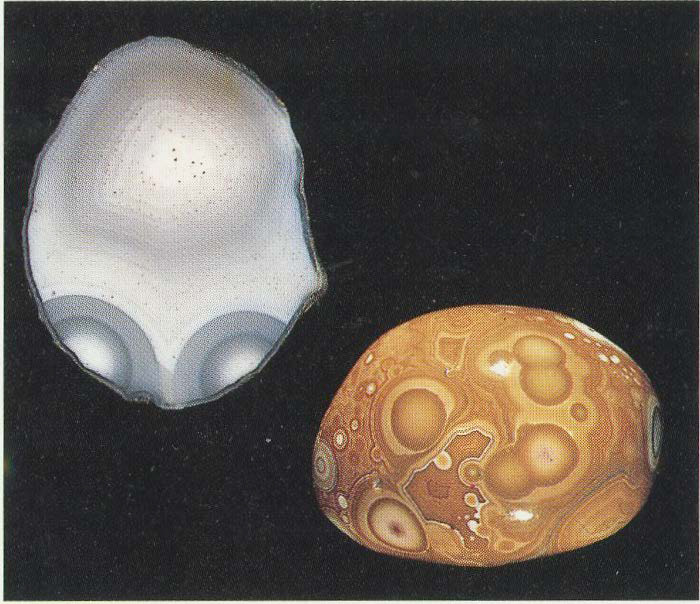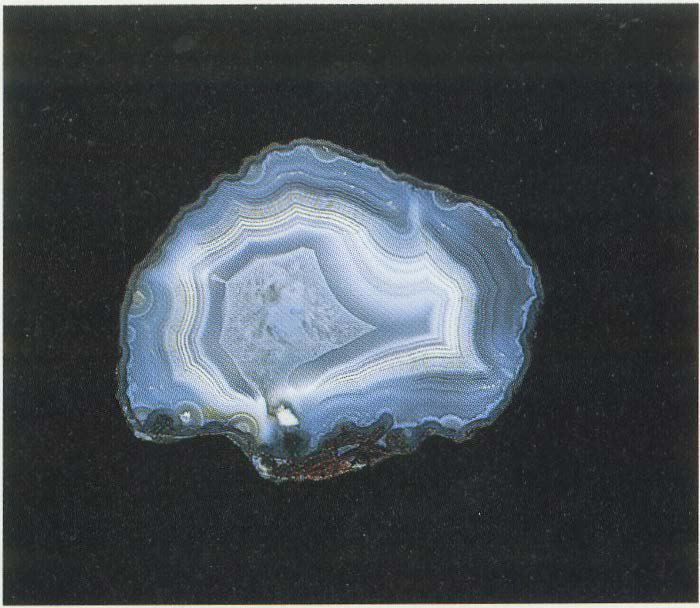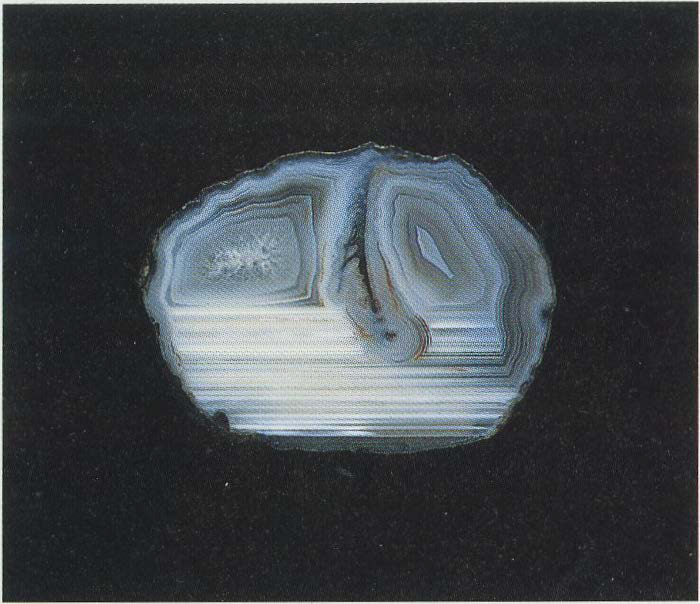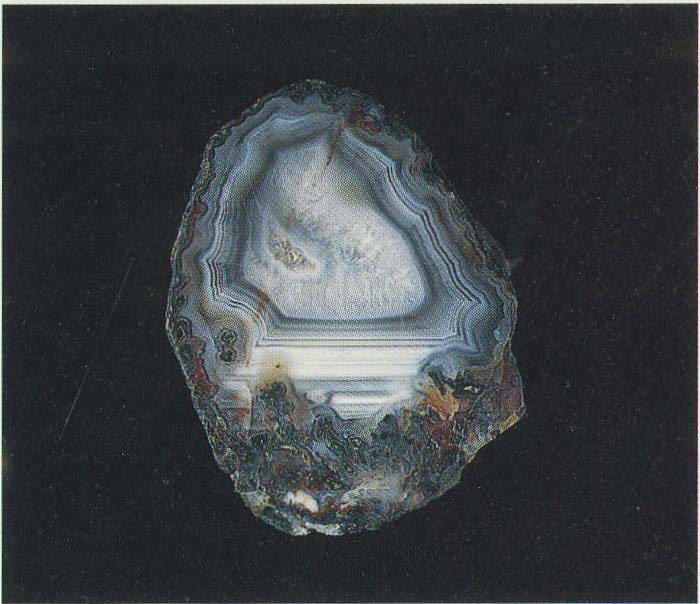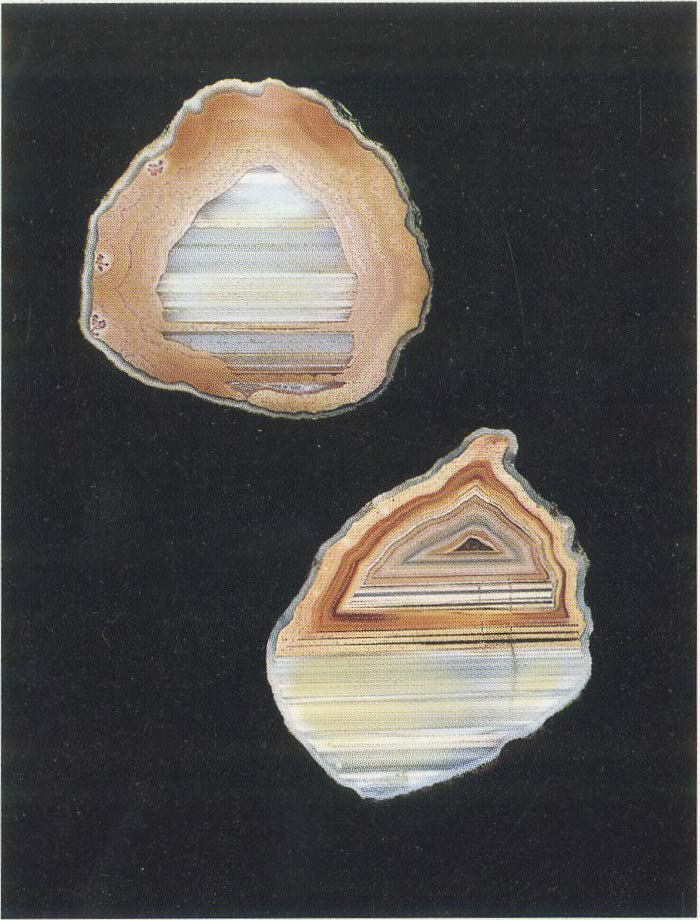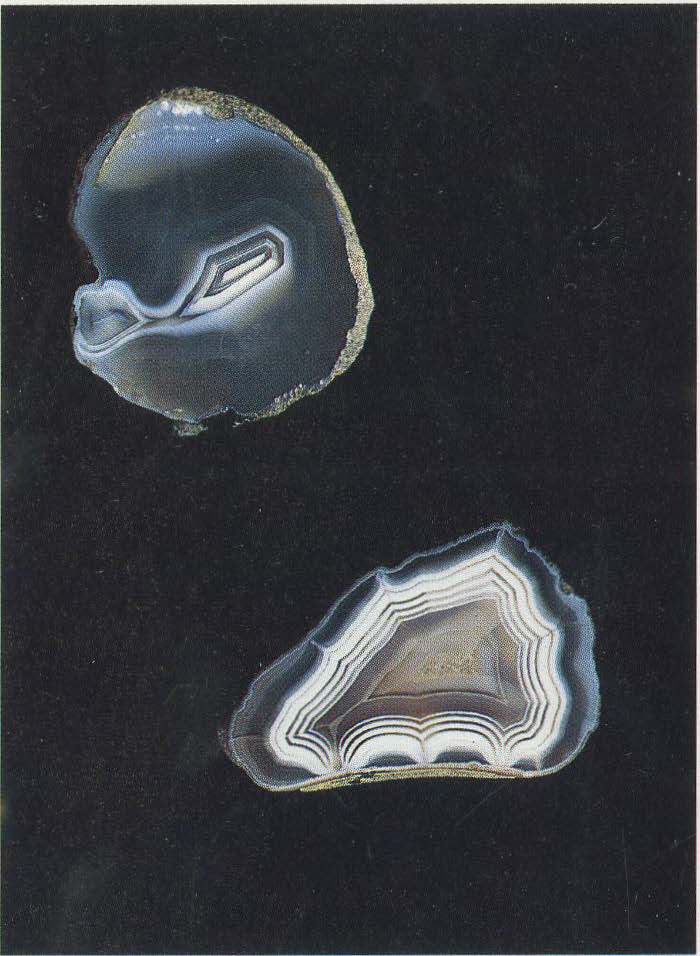Agate Characteristics
Agates have been collected and fashioned by man for thousands of years, yet until recently little was known about their origin and formation. During the last 200 years many investigators both professional and amateur have sought the secret of agate formation - but so far without complete success. The characteristic features of agates, though not difficult to recognize, are extremely difficult to explain and prove scientifically as they have not yet been investigated by currently available methods of experimental mineralogy.

(Fig 26) M. Forster Heddie, Professor of Chemistry, University of St Andrews (1862-84)
These characteristic features were first described by M. F. Heddie in 1901 and are listed below, followed by a short account of past theories which have attempted to explain the formation of agates, together with the presentation of a novel theory. Bands of chalcedony are usually clearly visible in cut or broken agates, while most agates possess a centre of quartz (fig 18). Many agates show a narrow outermost band called the clear chalcedony layer (fig 19). Some agates show hemi agate, sometimes called eye agate (fig 20). Many agates have a green skin, wisps of which may protrude into the agate, especially into the clear chalcedony layer (fig 21). A significant number of agates possess horizontal parallel layers of chalcedony, generally whitish in colour, called onyx. These onyx layers may terminate abruptly within the agate, but sometimes some of the layers will proceed from their terminations to follow around the contours of the upper part of the agate (figs 22 to 24 ). Some agates possess a structure called a tube of escape, which is often associated with a balloon-shaped structure called a dilatation on the tube of escape (fig 25).
A feature commonly associated with tubes of escape (with or without dilatations) is a rent (or crack) in the clear chalcedony layer. This rent in turn is often seen to lead directly to a minute raised marking on the exterior of the agate here called an agate dyke (figs 27 and 28; see also fig 37).
In summary, the characteristic features of an agate are: skin; clear chalcedony layer; hemi agate; banded chalcedony; onyx bands; central quartz; tube of escape; dilatation on the tube of escape; rent; and agate dyke.
